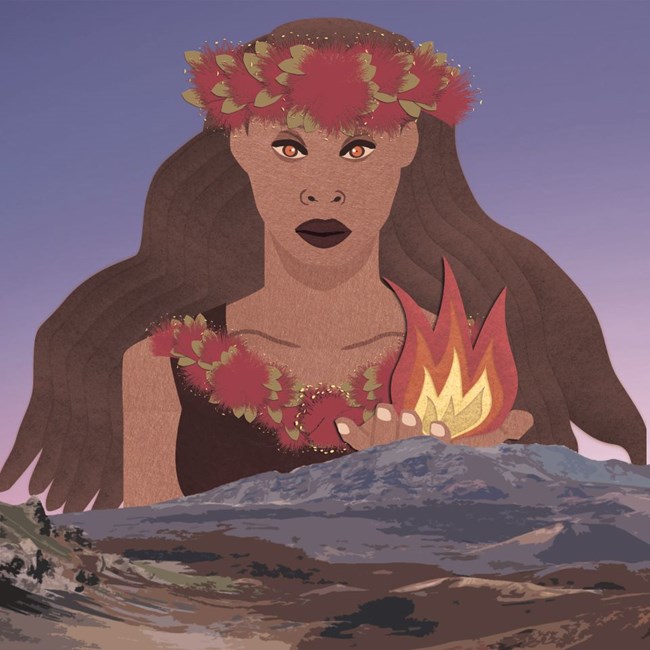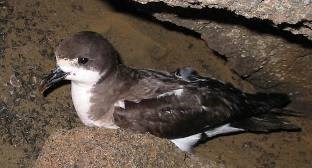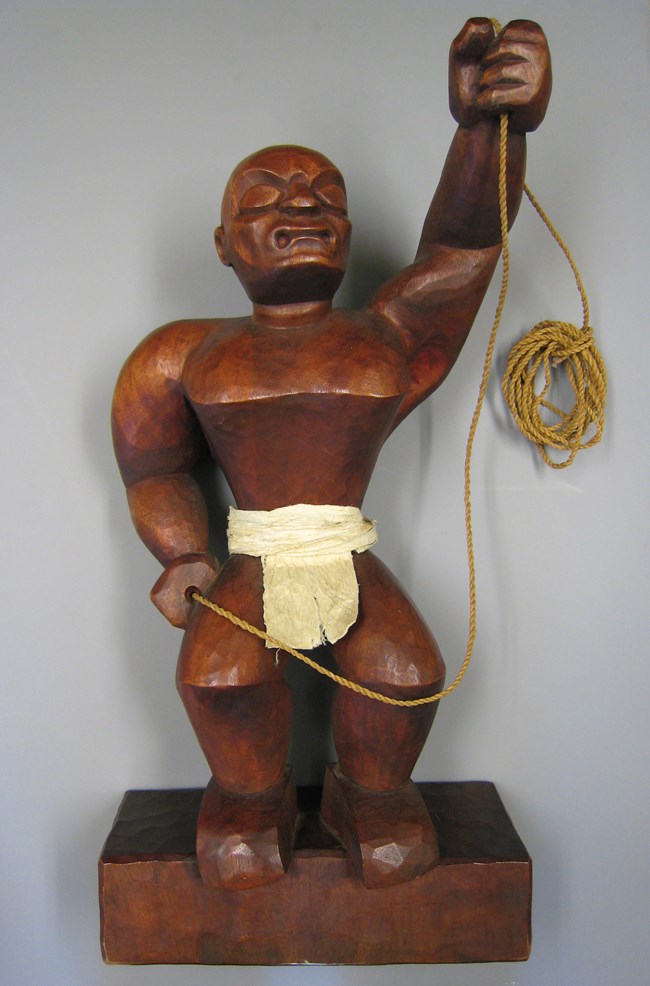
By KEM NPS photo IntroductionNature and mo‘olelo (story) are embedded deeply in the Hawaiian culture. Mo‘olelo are not just stories, they are a way for people to explain how the world works. These mo‘olelo still resonate today with the Hawaiian people. The Hawaiian culture believes that finding a balance with and respect for the natural world is critical. This exhibit explores the connection between mo‘olelo and nature in Hawai‘i. RocksThe rocks that you see here at Haleakalā are not just clusters of minerals created over millions of years by lava. To the Hawaiians, these rocks are the physical form of one of the most respected goddesses in the Hawaiian culture, the volcano goddess Pele. Pele is both praised and feared by the people of Hawai‘i. She may destroy everything in her path, but Pele is also a creator of lands. Pele has many kino lau (forms) and one of them is the lava that bleeds from the earth. You can see Pele in action today at Halema‘uma‘u crater on Kīlauea. Every year many visitors take pieces of Pele from Hawai‘i, which to the Hawaiians is disrespectful. In honor of the Hawaiian culture, please do not take rocks or cinder from Haleakalā National Park. It is also against the law to remove anything from a National Park. PlantsLush vegetation inhabits the Hawaiian Islands. The endemic Hawaiian tree ‘ōhi‘a lehua (Metrosideros polymorpha) is special to the Hawaiian culture, and its wood and blossoms are used for hula, building hale (houses) and wa‘a (canoes), and making lei. There is even a story of how the ‘ōhi‘a lehua came to be.The mo‘olelo tells of a handsome warrior named ‘Ōhi‘a, who was in love with a woman named Lehua. Pele, the volcano goddess, was also in love with ‘Ōhi‘a, but he did not feel the same. Because of that Pele turned ‘Ōhi‘a into a twisted tree and Lehua into a flower on the tree, hence the name ‘ōhi‘a lehua. If you pluck the lehua blossom from the tree, you are separating the lovers, and their tears will cause it to rain on the same day. Today the ‘ōhi‘a lehua is threatened due to the spread of the Rapid ‘Ōhi‘a Death (ROD). ROD has been killing ‘ōhi‘a lehua on the Island of Hawai‘i and was recently detected on Kaua‘i Island. Please see the ROD brochure for ways you can help protect the beloved ‘ōhi‘a lehua! 
Hawaiian petrel AnimalsThe Hawaiian creation chant Kumulipo explains the creation of life and how everything is connected. It also shares the philosophy that younger generations are responsible for taking care of older generations. This is shown in the relationship between the ocean, which was created first, and the land, created second. For every creature born in the ocean, a partner is born on land. It is the responsibility of the land creature to protect its ocean counterpart. The bird that you see exhibited is the ‘ua‘u (Pterodroma sandwichensis), or Hawaiian petrel. This native bird is referenced in the Kumulipo as being the protector to the lupe or stingray (Dasyatis lata). As for humans, it is our responsibility to protect the ‘āina (land) and all living things because we were the last to come into existence.
by Sam Ka'ai HALE 177 Natural phenomenaSimilar to many world cultures, Hawaiian Mo‘olelo help explain why things happen in our world. Stories explain how the earth came to be, why weather occurs and why we exist. Even though we now also have Western science to explain why things work, these stories still hold true to the cultures they originate from. The natural phenomena of the sun’s movement across the sky is explained in the Hawaiian mo‘olelo of Māui snaring the sun. At one time the sun moved too fast across the sky making it difficult for Maui’s mother Hina, the moon goddess, to dry her kapa (Hawaiian bark cloth). Māui was concerned about this.To fix the problem, he harvested ‘aha (coconut fiber) and fashioned a strong rope with which to snare the sun. Māui took his rope to Haleakalā and snared the rays of the reckless sun. Because of Māui’s heroic deed, the sun promised to move slowly across the sky, creating longer days.
Mo‘olelo are an important part of Hawaiian culture. Hawaiian culture depends upon the preservation of both these mo‘olelo and the natural world, which is embedded in the stories. With the hard work and dedication of the conservation efforts here in Hawai‘i, these plants, animals, landscapes, and the mo‘olelo have a chance to survive for the benefit of future generations.
|
Last updated: July 28, 2023
